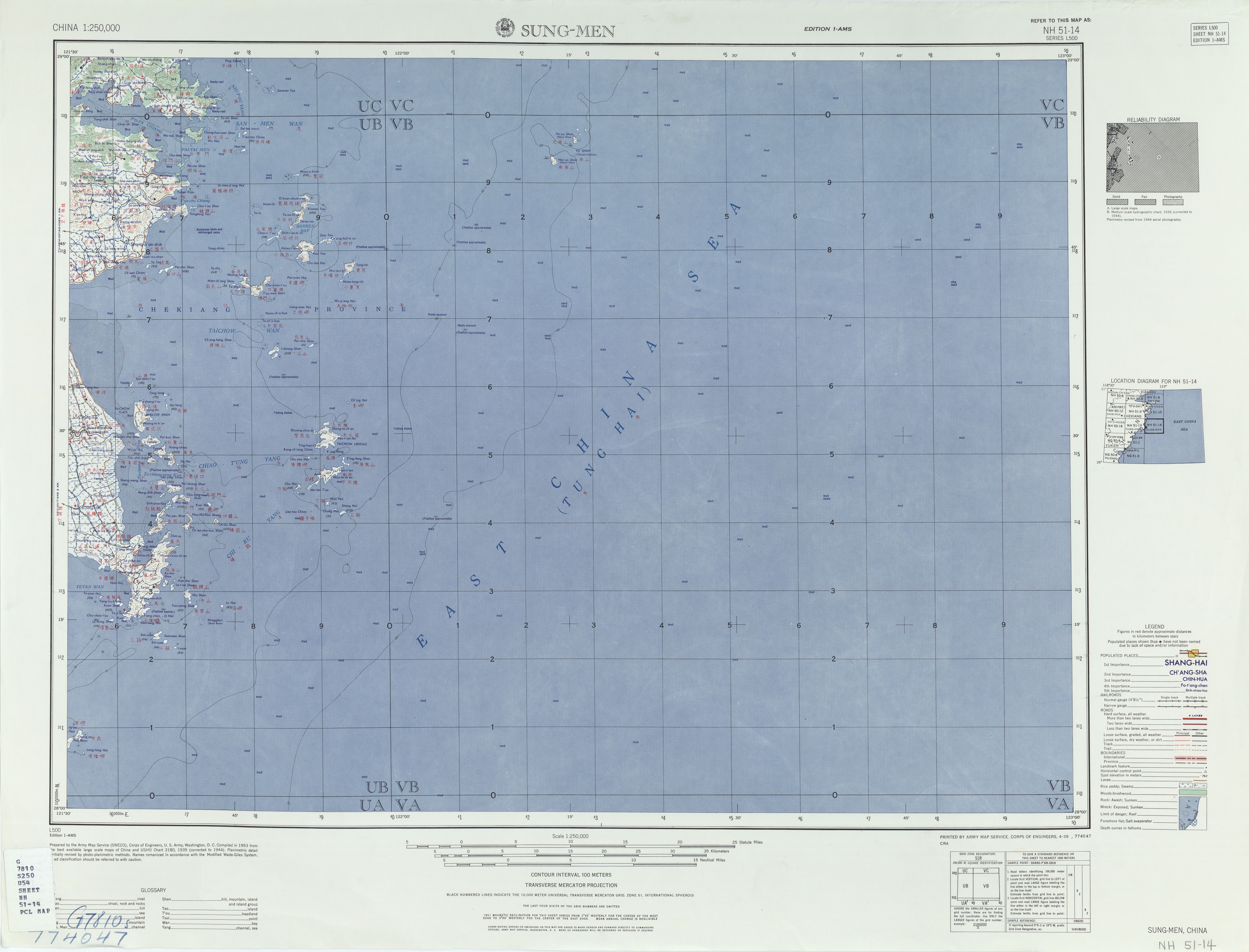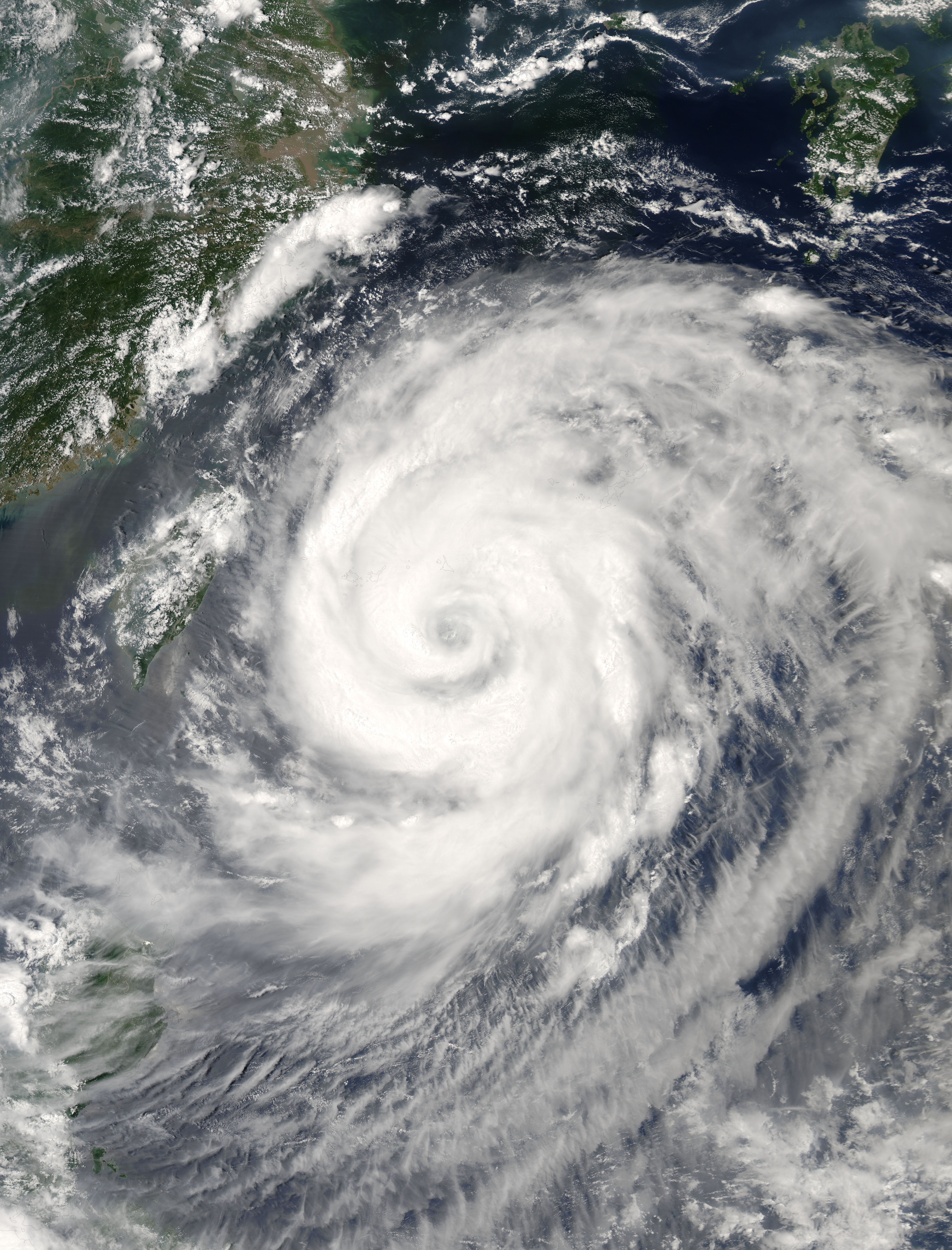|
Wenling
Wenling ( Wenling dialect: Ueng-ling Zy ; ) is a coastal county-level city in the municipal region of Taizhou, in southeastern Zhejiang province, China. It borders Luqiao and Huangyan to the north, Yuhuan to the south, Yueqing to the west, looks out to the East China Sea to the east. Wenling locates on 28°22'N, 121°21'E, approximately south of Shanghai. Jiangxia Tidal Power Station is located there as well as a number of e-waste recycling centers which have contributed to soil contamination in the region. Because of its geographical location, Wenling has long suffered from typhoons. On August 12, 2004, Typhoon Rananim, the sixth strongest typhoon in PRC history, landed in Shitang Town, Wenling. On 10 August 2019, Typhoon Lekima, the third strongest in PRC history, came ashore at Chengnan Town, Wenling. Administration The county-level city of Wenling currently administers 5 subdistricts and 11 towns. * Taiping Subdistrict (Tha-bing Ka-dau)太平街道 * Chengdong Subd ... [...More Info...] [...Related Items...] OR: [Wikipedia] [Google] [Baidu] |
Taizhou, Zhejiang
Tāizhōu (pronunciation in PRC Standard Mandarin: , Taizhou dialect: Thecieu), alternately known as Taichow, is a city located at the middle of the East China Sea coast of Zhejiang province. It is located south of Shanghai and southeast of Hangzhou, the provincial capital. It is bordered by Ningbo to the north, Wenzhou to the south, and Shaoxing, Jinhua, and Lishui to west. In addition to the municipality itself, the prefecture-level city of Taizhou includes 3 districts, 3 county-level cities, and 3 counties. As of the 2020 census, its total population was 6,662,888 inhabitants whom 3,578,660 lived in the built-up (''or metro'') area made of the three urban Districts and Wenling City now being largely conurbated. Etymology Taizhou's name is believed to derive from nearby Mount Tiantai. History Five thousand years ago, the ancestors of the modern inhabitants began to settle in this area. During the Xia, Shang, and Zhou dynasties, when the Chinese state was largely conf ... [...More Info...] [...Related Items...] OR: [Wikipedia] [Google] [Baidu] |
Jiangxia Tidal Power Station
The Jiangxia Tidal Power Station (江厦潮汐电站) is the fourth largest tidal power station in the world, located in Wuyantou, Wenling City, Zhejiang Province, China. Although the proposed design for the facility was 3,000 kW, the current installed capacity is 3,200 kW, generated from one unit of 500 kW, one unit of 600 kW, and three units of 700 kW, totalling the installed capacity to 3,200 kW. Proposals were made to install a sixth 700 kW unit, but this has not yet been installed. The facility generates up to 6.5 GWh of power annually. This facility also hosts a 40 kW solar PV power installation with an estimated 45,000 kWh annual production capacity. This system is composed of 216 pieces of 186 W monocrystalline solar modules manufactured by Perlight Solar. The power station feeds the energy demand of small villages at a distance, through a 35- kV transmission line. The maximum tidal range in the estuary is . Now it is ... [...More Info...] [...Related Items...] OR: [Wikipedia] [Google] [Baidu] |
Daxi Town
Dàxī may refer to: Mainland China *Daxi (大西) dynasty, a short-lived dynasty (1643–1646) established by Zhang Xianzhong *Daxi Creek (大溪), tributary of the Xitao River in Anji County, Zhejiang *Daxi culture (5000 BC–3000 BC), Neolithic culture centered in the Three Gorges region, around the middle Yangtze River * Daxi, Youyang County, town in Youyang Tujia and Miao Autonomous County, Chongqing * Daxi, Pinghe County, town in Pinghe County, Fujian * Daxi, Jiexi County, town in Jiexi County, Guangdong * Daxi, Wenling, town in Wenling, Zhejiang * Datong–Xi'an Passenger Railway Taiwan *Daxi District Daxi District (), formerly known as Daxi Township (), is a district in eastern Taoyuan City, Taiwan. In March 2012, it was named one of the ''Top 10 Small Tourist Towns'' by the Tourism Bureau of Taiwan. History The Daxi area was occupied ..., district in Taoyuan, Taiwan * Daxi Station, railway station in Yilan County, Taiwan, Republic of China {{disambig ... [...More Info...] [...Related Items...] OR: [Wikipedia] [Google] [Baidu] |
Typhoon Rananim
Typhoon Rananim, known in the Philippines as Typhoon Karen, was the strongest typhoon to make landfall on the Chinese province of Zhejiang since 1956. It formed on August 6, 2004, intensifying into a tropical storm on August 8. Rananim gradually intensified, initially moving northward before turning to the northwest and attaining typhoon status. After developing a small eye, the typhoon attained peak winds of 150 km/h (90 mph) as it passed between Taiwan and Okinawa. On August 12, Rananim moved ashore in China, and it dissipated three days later. The name Rananim means "hello" in the Chuukese language. Impact outside of China was minimal and largely limited to heavy rains, although one death was reported in Taiwan. In the country, strong winds and heavy rainfall left heavy damage near the coast, as well as to farms further inland. Rananim destroyed 64,300 houses and damaged another 125,000. The typhoon affected 75 counties, affecting 18 mil ... [...More Info...] [...Related Items...] OR: [Wikipedia] [Google] [Baidu] |
Typhoon Lekima
Typhoon Lekima, known in the Philippines as Typhoon Hanna, was the second-costliest typhoon in Chinese history. The ninth named storm of the 2019 Pacific typhoon season, Lekima originated from a tropical depression that formed east of the Philippines on 30 July. It gradually organized, became a tropical storm, and was named on 4 August. Lekima intensified under favorable environmental conditions and peaked as a Category 4–equivalent Super typhoon. However, an eyewall replacement cycle caused the typhoon to weaken before it made landfall in Zhejiang early on 10 August, as a Category 2–equivalent typhoon. Lekima weakened subsequently while moving across Eastern China, and made its second landfall in Shandong on 11 August. Lekima's precursor enhanced the southwestern monsoon in the Philippines, which brought heavy rain to the country. The rains caused three boats to sink and 31 people died in this accident. Lekima brought catastrophic damage in mainland China, with a death toll ... [...More Info...] [...Related Items...] OR: [Wikipedia] [Google] [Baidu] |
Taiping Subdistrict, Wenling
__NOTOC__ Taiping, Tai-p’ing, or Tai Ping most often refers to: Chinese history * Princess Taiping (died 713), Tang dynasty princess * Taiping Rebellion (1850–1864), civil war in southern China ** Taiping Heavenly Kingdom (1851–1864), the rebel government during the Taiping Rebellion * Taiping Prefecture, a prefecture during the Ming and Qing dynasties * SS ''Taiping'' (1926), a steam ship used by the Royal Navy * ''Taiping'' (steamer), a Chinese steamer that sank in 1949 Historical eras *Taiping (256–258), era name used by Sun Liang, emperor of Eastern Wu *Taiping (409–430), era name used by Feng Ba, emperor of Northern Yan *Taiping (485–491), era name used by Yujiulü Doulun, khan of Rouran *Taiping (556–557), era name used by Emperor Jing of Liang *Taiping (617–622), era name used by Lin Shihong *Taiping (1021–1031), era name used by Emperor Shengzong of Liao *Taiping (1356–1358), era name used by Xu Shouhui Places * Taiping, Perak, a municipality in Perak ... [...More Info...] [...Related Items...] OR: [Wikipedia] [Google] [Baidu] |
County-level City
A county-level municipality (), county-level city or county city, formerly known as prefecture-controlled city (1949–1970: ; 1970–1983: ), is a county-level administrative division of the People's Republic of China. County-level cities have judicial but no legislative rights over their own local law and are usually governed by prefecture-level divisions, but a few are governed directly by province-level divisions. A county-level city is a "city" () and "county" () that have been merged into one unified jurisdiction. As such it is simultaneously a city, which is a municipal entity and a county which is an administrative division of a prefecture. Most county-level cities were created in the 1980s and 1990s by replacing denser populated counties. County-level cities are not "cities" in the strictest sense of the word, since they usually contain rural areas many times the size of their urban, built-up area. This is because the counties that county-level cities ... [...More Info...] [...Related Items...] OR: [Wikipedia] [Google] [Baidu] |
Zhejiang
Zhejiang ( or , ; , also romanized as Chekiang) is an eastern, coastal province of the People's Republic of China. Its capital and largest city is Hangzhou, and other notable cities include Ningbo and Wenzhou. Zhejiang is bordered by Jiangsu and Shanghai to the north, Anhui to the northwest, Jiangxi to the west and Fujian to the south. To the east is the East China Sea, beyond which lies the Ryukyu Islands. The population of Zhejiang stands at 64.6 million, the 8th highest among China. It has been called 'the backbone of China' due to being a major driving force in the Chinese economy and being the birthplace of several notable persons, including the Chinese Nationalist leader Chiang Kai-shek and entrepreneur Jack Ma. Zhejiang consists of 90 counties (incl. county-level cities and districts). The area of Zhejiang was controlled by the Kingdom of Yue during the Spring and Autumn period. The Qin Empire later annexed it in 222 BC. Under the late Ming dynasty and ... [...More Info...] [...Related Items...] OR: [Wikipedia] [Google] [Baidu] |
County-level City
A county-level municipality (), county-level city or county city, formerly known as prefecture-controlled city (1949–1970: ; 1970–1983: ), is a county-level administrative division of the People's Republic of China. County-level cities have judicial but no legislative rights over their own local law and are usually governed by prefecture-level divisions, but a few are governed directly by province-level divisions. A county-level city is a "city" () and "county" () that have been merged into one unified jurisdiction. As such it is simultaneously a city, which is a municipal entity and a county which is an administrative division of a prefecture. Most county-level cities were created in the 1980s and 1990s by replacing denser populated counties. County-level cities are not "cities" in the strictest sense of the word, since they usually contain rural areas many times the size of their urban, built-up area. This is because the counties that county-level cities ... [...More Info...] [...Related Items...] OR: [Wikipedia] [Google] [Baidu] |
Soil Contamination
Soil contamination, soil pollution, or land pollution as a part of land degradation is caused by the presence of xenobiotic (human-made) chemicals or other alteration in the natural soil environment. It is typically caused by industrial activity, agricultural chemicals or improper disposal of waste. The most common chemicals involved are petroleum hydrocarbons, polynuclear aromatic hydrocarbons (such as naphthalene and benzo(a)pyrene), solvents, pesticides, lead, and other heavy metals. Contamination is correlated with the degree of industrialization and intensity of chemical substance. The concern over soil contamination stems primarily from health risks, from direct contact with the contaminated soil, vapour from the contaminants, or from secondary contamination of water supplies within and underlying the soil. Mapping of contaminated soil sites and the resulting cleanups are time-consuming and expensive tasks, and require expertise in geology, hydrology, chemistry, computer ... [...More Info...] [...Related Items...] OR: [Wikipedia] [Google] [Baidu] |
Town Of China
When referring to political divisions of China, town is the standard English translation of the Chinese (traditional: ; ). The Constitution of the People's Republic of China classifies towns as third-level administrative units, along with for example townships (). A township is typically smaller in population and more remote than a town. Similarly to a higher-level administrative units, the borders of a town would typically include an urban core (a small town with the population on the order of 10,000 people), as well as rural area with some villages (, or ). Map representation A typical provincial map would merely show a town as a circle centered at its urban area and labeled with its name, while a more detailed one (e.g., a map of a single county-level division) would also show the borders dividing the county or county-level city into towns () and/or township () and subdistrict (街道) units. The town in which the county level government, and usually the division's main ... [...More Info...] [...Related Items...] OR: [Wikipedia] [Google] [Baidu] |



%2C_King_of_Wuyue.jpg)